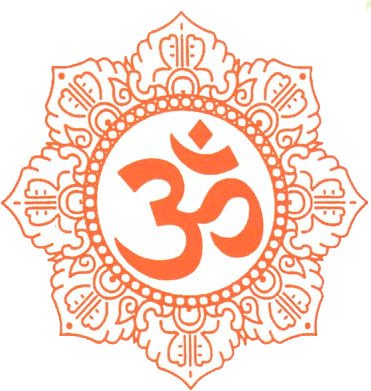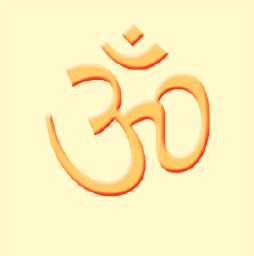-:
Aum
:-
The most sacred symbol in
Hindu dharma. Aum (OM) is the sound of the infinite. Aum is said to
be the essence of all mantras, the highest of all matras or divine word (shabda),
brahman (ultimate reality) itself. Aum is said to be the essence of the
Vedas.
By sound and form, AUM symbolizes the infinite Brahman (ultimate reality) and the entire universe.
A - stands for Creation
U - stands for Preservation
M - stands for Destruction or dissolution
This is representative of the Trinity of God in Hindu dharma (Brahma, Vishnu and Shiva)

The three portions of AUM
relate to the states of waking, dream and deep sleep
and the three gunas (Rajas, Satva, Tamas)
The three letters also indicates three planes of existence, Heaven (swarga), Earth (martya) and Netherworld (patala)
All the words produced by the human vocal organ can be represented by AUM.
A is produced by the throat, U & M by the lips
In the Vedas, AUM is the sound of the Sun, the sound of Light. It is the
sound of assent (affirmation) and ascent (it has an upwards movement and
uplifts the soul, as the sound of the divine eagle or falcon.
Aum (also Om) is a mystical or sacred syllable in the Hindu, Jain and Buddhist religions. It is placed at the beginning of most Hindu texts as a sacred exclamation to be uttered at the beginning and end of a reading of the Vedas or previously to any prayer or mantra and also is said in the beginning of any puja (religious ritual). The Mandukya Upanishad is entirely devoted to the explanation of the syllable.
Esoteric significance of OM
Esoterically the 'a' stands for the first stage of wakefulness, where we experience, through our gross body and the senses and the mind the totality of external experiences. The 'u' stands for the state of dream sleep in which mental experiences are available, though erratically, by the mind which is the only thing awake, without the help of the external sense organs or the presence of the discriminating intellect. The two kinds of experience, namely, those of the waking state and those of the dream state, contradict each other, in the sense that a man may experience hunger in a dream though he has eaten in the waking state a few minutes earlier.
In the state of deep sleep, represented by the sound 'm' there is no consciousness of any experience; even the mind has gone to sleep. But still there is an awareness after the deep sleep is over that one has been sleeping. The Maanduukyopanishad says that in the state of deep sleep the aatman which is always present, has been the witness to the sleep of the body and it is this which brings back the memory. It is the aatman which is also present beyond the three states of experience and this fourth state (turiiyaa-vasthaa) corresponds to the silence that ensues after one has steadily pronounced 'om'. It is the state of 'no maatraa' ( = amaatraa). In that state of silence Consciousness alone is present and there is nothing else, and therefore nothing is to be cognized or be conscious of. So when we recite 'om' we are advised to meditate on this common substratum of all the three states of experience, and, during the silence that follows, merge in the Consciousness that alone persists as a substratum. That Consciousness is theaatman, that is brahman.
Symbolic
Form of Aum / Om
